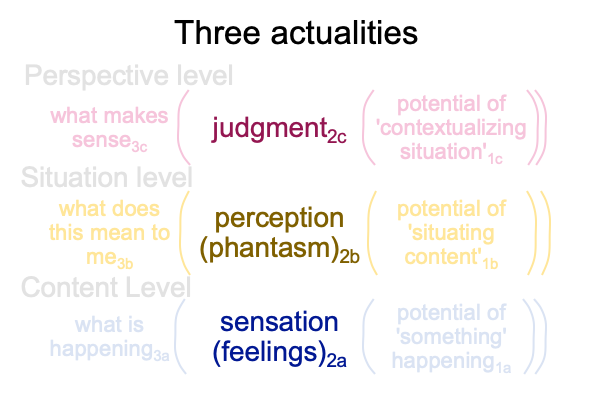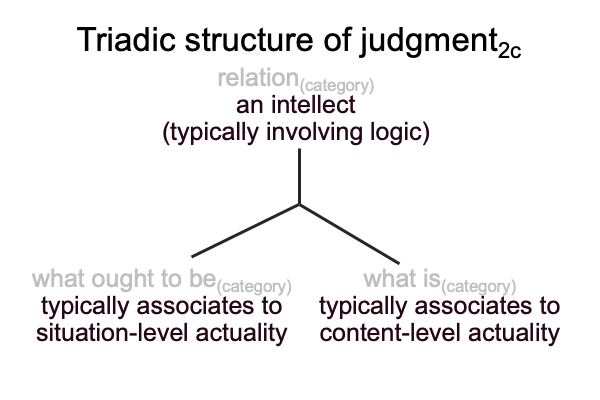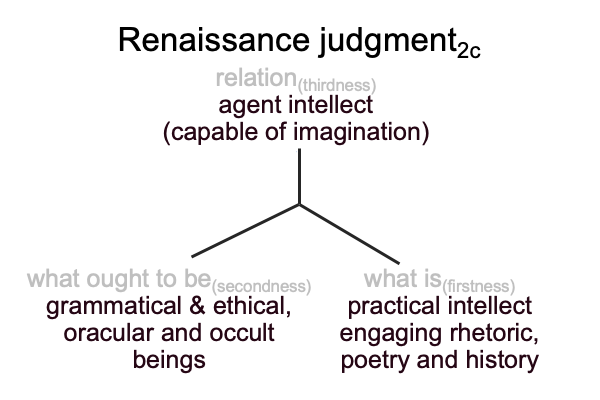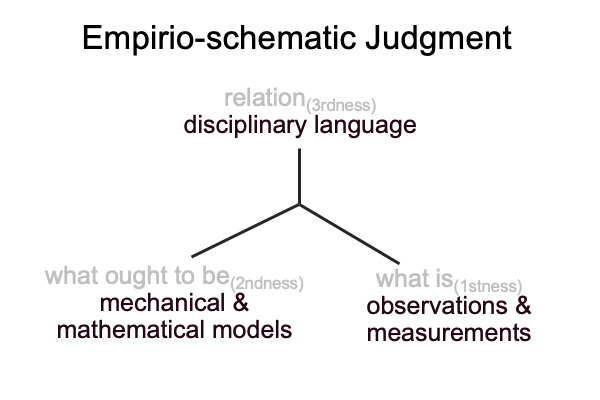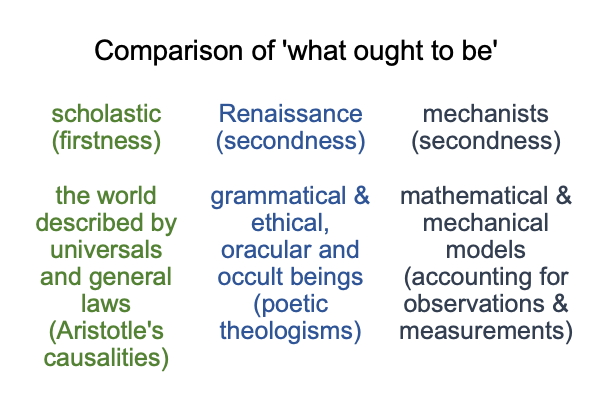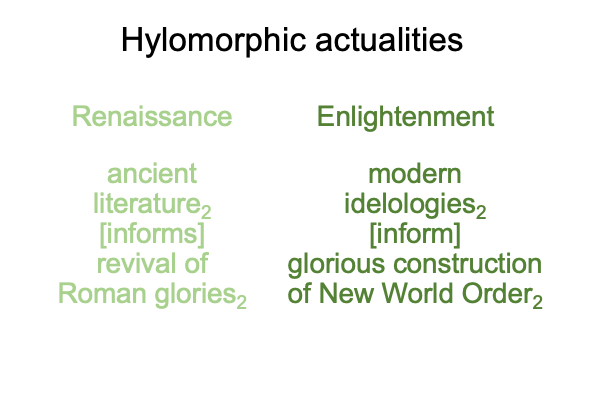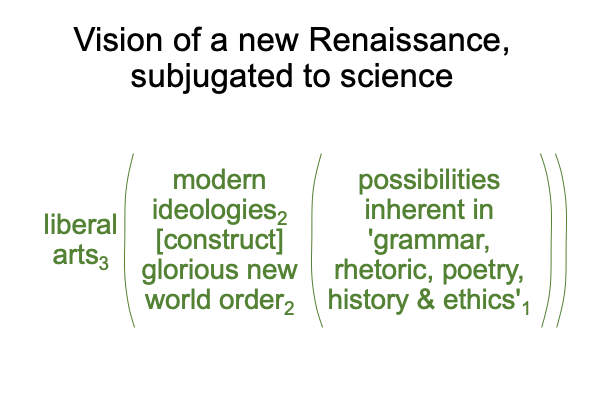Looking at Peter Redpath’s Essay (2000) “The Homeschool Renaissance” (Part 7 of 17)
0030 At this turn in his whirlwind history, Redpath addresses the nature of the mind in scholastic psychology. If nothing else, this nature follows a certain logic. The mind is composed of three category-based nested forms, arranged as a category-based nested form. The three-level interscope is described in A Primer on Sensible and Social Construction.
The three levels are content (corresponding to firstness), situation (secondness) and perspective (thirdness). Thirdness brings secondness into relation with firstness. Perceptionc brings situationb into relation with contenta.
The following appears in Comments on Brian Kemple’s Essay (2020) “Signs and Reality”.
0031 On the content level, the five external senses (plus internal sensing of homeostasis) belong to the active body. Feelings, immediate sequalae to the senses (including automatic decoding of parole), belong to the sensate soul. The active body [substantiates] the sensate soul2a accounts for sensations2a, in the normal context of what is happening3aarising from the potential of ‘something happening’1a.
0032 On the situation level, the imaginative senses1b belong to the perceptive soul [informing] the reactive body2b. Imagination1b has the potential to situate the content level. Imagination1b supports perception2b. The body2b, instinctively (emotions) or through training (manners), reacts to the perceptive soul2b, in the normal context of what this means to me3b. Some label the situation-level actuality2b as “perception” or “phantasm”. I suppose a distinction between these two terms colors the character of imagination1b.
0033 On the perspective level, the intellect3c forms a judgment2c, addressing the question, “Does this make sense?”. What makes sense3c emerges from the potential of contextualizing the situation1c.
A judgment is a primal triadic relation containing three elements: relation, what is and what ought to be. The relationmay be active (imbuing what ought to be with the qualities of secondness) or passive (imbuing what is with secondness). The perspective-level relation2c may be theoretical or practical. What ought to be2c typically engages the situation-level actuality2b, transforming a species expressa2b (perception2b) into a species expressa intelligibilis2c. What is2c typically engages species impressa2a, the content-level actuality2a, as a species impressa intelligibilis2c.
In sum, content should be referential and situation should be intelligible. The intellect offers a relation that brings these together.
0034 What does this imply?
Judgment is synthetic, as well as analytic.

